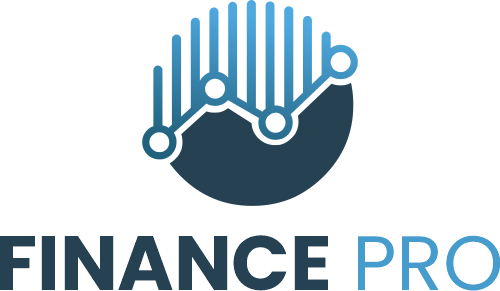Non-fungible tokens (NFTs) have disrupted the digital landscape, bringing a new dimension to the investment world. As unique, blockchain-based assets, NFTs have gained immense popularity, particularly in the art and collectibles markets. However, their potential extends far beyond digital artwork. Many investors and financial experts are now exploring the role NFTs can play in traditional investment portfolios. Integrating NFTs into a portfolio presents exciting opportunities, but it also requires a comprehensive understanding of the risks and rewards involved.
What Are NFTs and Why Are They Unique?
To understand NFT integration, it’s important to grasp their uniqueness. Unlike cryptocurrencies such as Bitcoin or Ethereum, NFTs are not interchangeable. Each NFT represents ownership of a distinct digital asset—whether it’s artwork, music, virtual real estate, or even access to exclusive events. Blockchain technology ensures the provenance and authenticity of these assets, making NFTs valuable to collectors and investors alike.
NFTs have grown in value due to their scarcity and the increasing demand for digital ownership. Traditional investors might initially view them as speculative assets, but their potential for long-term value creation is gradually gaining recognition. For example, blue-chip NFTs, like CryptoPunks or Bored Ape Yacht Club, have shown resilience and growth, making them attractive to a wider audience.
Why Consider NFTs in Traditional Investment Portfolios?
The integration of NFTs into traditional portfolios is not merely a trend. It reflects the evolving nature of asset diversification. Here are several reasons why NFTs are worth considering:
Diversification Benefits
Traditional portfolios typically consist of stocks, bonds, mutual funds, and real estate. While these assets offer stability, they are often correlated with broader economic trends. NFTs, on the other hand, operate in a distinct ecosystem. Their value is driven by factors such as cultural trends, scarcity, and innovation in blockchain technology. By incorporating NFTs, investors can reduce portfolio volatility and increase exposure to alternative assets.
Potential for High Returns
Although volatile, NFTs have shown the potential for exponential growth. Early adopters of digital collectibles have witnessed massive returns on investment. For instance, a piece of NFT art purchased for a few hundred dollars has sometimes resold for millions. This level of return, while not guaranteed, is rare in traditional markets and makes NFTs an appealing option for risk-tolerant investors.
Access to a Growing Market
The NFT market has expanded rapidly, with total sales exceeding billions of dollars in recent years. As more industries adopt NFTs for purposes beyond art—such as gaming, real estate, and intellectual property—the market’s potential continues to grow. Investors who include NFTs in their portfolios can position themselves to benefit from the digital economy’s evolution.
Hedge Against Inflation
Inflation erodes the purchasing power of traditional assets. NFTs, as digital and often scarce assets, provide a potential hedge against inflation. Their value is less influenced by monetary policies and more by their intrinsic and cultural appeal. For long-term investors, this makes them an interesting addition to counter inflationary pressures.
How to Integrate NFTs into Investment Portfolios
Adding NFTs to a portfolio requires careful planning and consideration. Unlike traditional investments, NFTs come with unique risks and challenges. Here are key steps to follow:
Understand the Market Dynamics
Before diving into NFT investments, it is crucial to research thoroughly. The NFT market is driven by trends and community engagement. Understanding the value drivers—such as rarity, utility, and artist reputation—is essential. Platforms like OpenSea, Rarible, and Foundation offer a wide range of NFTs to explore.
Start with a Small Allocation
Given their speculative nature, NFTs should not dominate a portfolio. Financial advisors recommend starting with a small allocation, such as 1-5% of the total portfolio value. This minimizes risk while still allowing exposure to this burgeoning asset class. Over time, investors can adjust their allocation based on performance and market developments.
Focus on Quality Over Quantity
Not all NFTs are created equal. Some gain value due to their association with renowned artists or brands, while others may lose value rapidly. Investing in blue-chip NFTs with established track records is often a safer approach. Additionally, investors should verify the authenticity and provenance of an NFT before purchasing.
Diversify Within the NFT Space
Just as diversification is essential in traditional investments, it applies to NFTs as well. Instead of focusing solely on digital art, investors can explore other categories like gaming NFTs, virtual real estate, or tokenized assets. This strategy reduces dependence on a single market segment and enhances overall portfolio resilience.
Monitor and Rebalance
NFTs are highly dynamic assets, and their value can fluctuate significantly. Regularly monitoring their performance and rebalancing the portfolio is crucial. Tools and analytics platforms, such as Nansen or Dune Analytics, can help investors track market trends and make informed decisions.
Risks and Challenges of NFT Integration
While NFTs offer exciting opportunities, they are not without risks. Investors must approach them with caution and awareness of potential pitfalls.
Market Volatility
The NFT market is notoriously volatile. Prices can skyrocket within days but may also plummet just as quickly. This unpredictability makes NFTs unsuitable for conservative investors or those with low-risk tolerance.
Lack of Regulation
The regulatory framework for NFTs is still evolving. Issues like copyright disputes, tax implications, and fraud remain concerns. Investors must stay informed about legal developments and seek professional advice when necessary.
Limited Liquidity
Unlike stocks or bonds, NFTs are not always easy to sell. Finding a buyer willing to pay the desired price can be challenging, especially during market downturns. Illiquidity is a significant risk that investors must account for.
Technological Risks
NFTs rely on blockchain technology, which is not immune to vulnerabilities. Cybersecurity breaches, wallet hacks, or platform failures can result in significant losses. Using secure wallets and trusted marketplaces is vital to mitigate these risks.
The Opportunities of NFTs in Investment Portfolios
The integration of NFTs into traditional portfolios is still in its early stages. However, the trajectory is promising. As technology advances and adoption grows, NFTs may become a mainstream asset class. Institutional investors are already entering the space, signaling a shift toward broader acceptance. Innovations like fractional ownership and NFT-backed loans could further enhance their appeal.
In the future, NFTs might also merge with other technologies, such as artificial intelligence and virtual reality, creating new investment opportunities. For forward-thinking investors, staying informed and adaptable will be key to capitalizing on these developments.
Conclusion
NFTs represent a paradigm shift in the investment landscape. While their integration into traditional portfolios comes with challenges, the potential benefits—from diversification to high returns—are hard to ignore. By approaching NFT investments with due diligence, risk management, and a long-term perspective, investors can unlock new avenues for growth. As the digital economy continues to evolve, NFTs are poised to play an increasingly significant role in shaping the future of finance.


